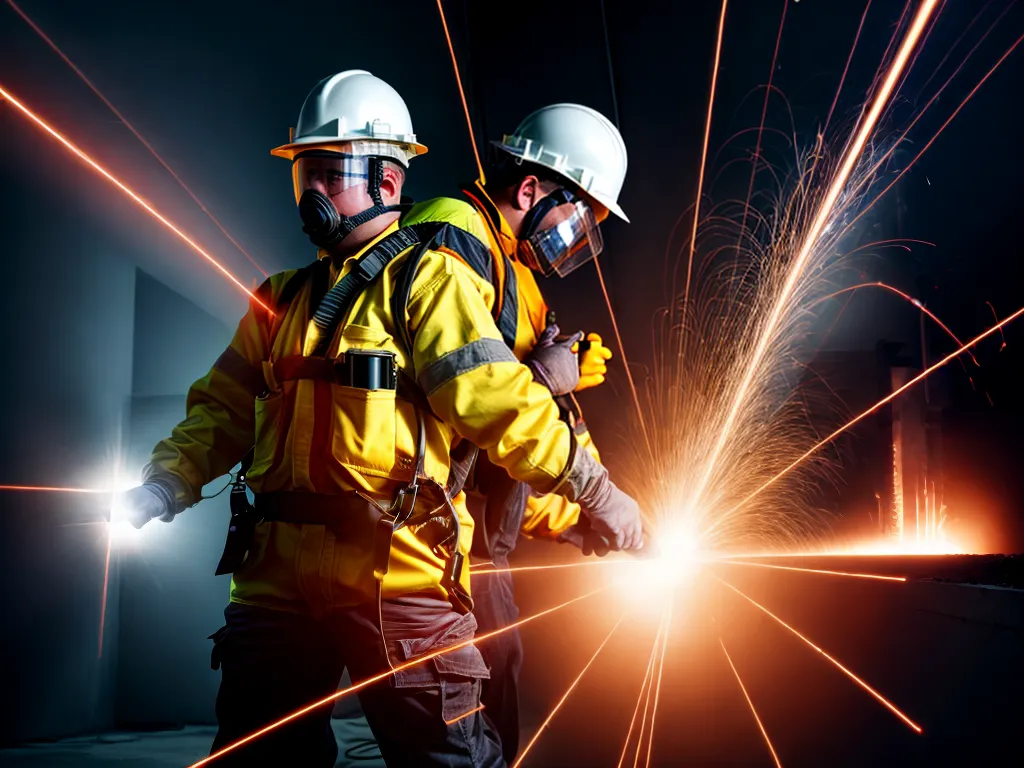
Obscure safety practices to protect against arc flash hazards
Introduction
Arc flashes are one of the most dangerous workplace hazards that many electricians face. While safety practices like wearing proper PPE are well known, there are also some more obscure practices that can help mitigate arc flash risks. In this article, I'll provide an in-depth look at some of these lesser-known precautions electricians can take to stay safe from arc flash hazards.
Perform a thorough arc flash risk assessment
Before doing any work on energized equipment, it's crucial to perform a detailed arc flash risk assessment. This involves calculating the available incident energy at different parts of the electrical system and determining the appropriate PPE levels needed. An arc flash risk assessment helps you:
- Identify parts of the system that pose the highest arc flash hazards.
- Select PPE that provides an appropriate level of protection.
- Plan safe work practices.
- Determine if a piece of equipment needs to be de-energized.
I always take the time to thoroughly go through the arc flash risk assessment before starting work. It provides invaluable insights that aren't always obvious at first glance. Don't rely on outdated labels - regularly perform new assessments whenever changes are made to the electrical system.
Use arc-rated rainwear
Arc-rated rainwear is not something I see many electricians using. But it can provide an extra layer of protection when working in damp conditions outdoors.
Wet conditions can increase the conductive path for an arc flash - so more of the incident energy can reach your body. Arc-rated rainwear acts as thermal insulation if an arc were to occur in the rain. It's available in a wide range of cal/cm2 ratings.
I keep a set of arc-rated rain bibs and jacket ready to wear when working in the rain near live parts. It gives me peace of mind that I've got an extra barrier against burns if the worst happens.
Have an arc flash blanket on hand
An arc flash blanket is a flexible blanket made of arc-rated materials like fiberglass or silica. I always keep one draped over my shoulder when working on live panels. That way if an arc flash erupts, I can quickly deploy the blanket to shield myself from the thermal energy.
Key benefits of having an arc flash blanket:
- Provides upper body protection when standing in front of an active arc.
- Blocks radiant heat energy from reaching your body.
- Lightweight and easy to quickly put between you and the arc.
I've thankfully never had to use my arc flash blanket in an emergency. But it gives me an added measure of quick protection that could be the difference between a serious burn and walking away unharmed.
Use remote switching devices
Any time I'm able to work from a distance, I take advantage of it. Remote switching devices allow you to operate disconnect switches and breakers from outside the arc flash boundary. This prevents you from getting caught in a flash while operating the equipment.
Some types of remote switching tools I utilize:
- Remote racking/switching systems - Allow racking breakers in and out from a control panel.
- Charged remote operating poles - Use an insulated pole to charge/open devices from a distance.
- Wireless remote switching solutions - New tech that provides controls via remote.
Operating gear remotely takes a little extra gear and planning. But it's one of the most effective ways to prevent exposure in the event of an arc flash.
Have an evacuation plan
Before I start any hazardous work near live parts, I scope out the area and come up with an evacuation plan. I look for exits and obstacles that could impede fast escape from an arc blast.
Key points I consider when making an evacuation plan:
- Find at least two exit routes from the work area.
- Note locations of fire pulls and extinguishers.
- Check for trip hazards and block any paths with obstacles.
- Identify sources of containment that could block evacuation.
- Find safe places to take cover like firewalls.
Mentally rehearsing an evacuation plan helps prepare me to react quickly if an arc occurs. Taking the time to think through escape routes could make a big difference if disaster strikes.
Conclusion
Arc flashes present a very real danger for electricians working on energized systems. While wearing proper PPE is essential, there are also some less obvious precautions that can enhance safety. Taking steps like planning an evacuation route, having an arc blanket on hand, and operating equipment remotely require a bit of extra preparation - but could end up saving your life. Integrating some of these unconventional practices into your work habits helps provide another layer of protection from arc blast injuries.